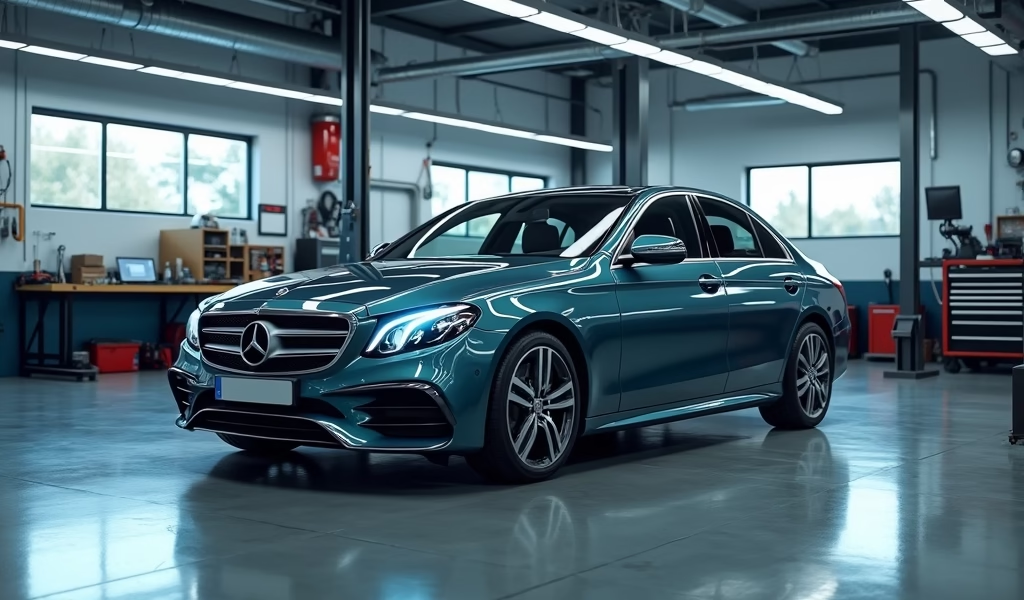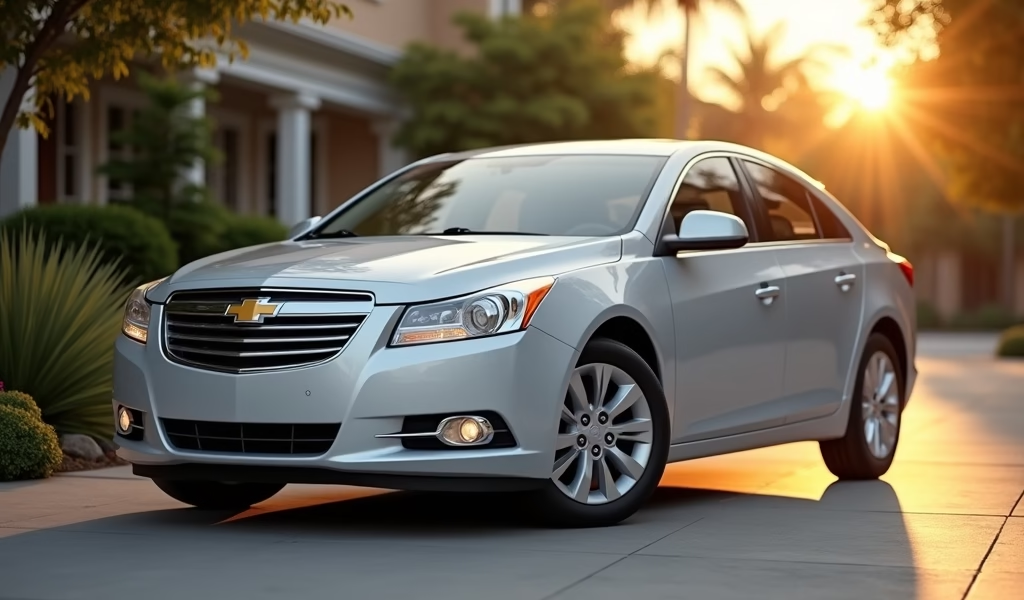Overview
This article provides seven essential tips for buying a reliable used car: determine your needs and budget, research dependable models, check vehicle histories, balance age versus mileage, get a pre-purchase inspection, consider total ownership costs, and know where to shop. Written by an experienced mechanic, it emphasizes that finding the best used car requires preparation, research and patience rather than luck, with the goal of helping buyers avoid costly mistakes.
Table of Contents
- Tip 1: Determine Your Needs and Budget
- Tip 2: Research Reliable Makes and Models
- Tip 3: Check the Vehicle History
- Tip 4: Assess the Age vs. Mileage Balance
- Tip 5: Get a Pre-purchase Inspection
- Tip 6: Consider the Total Cost of Ownership
- Tip 7: Know Where to Shop
- Bonus Tip: Professional Help When You Need It
- Conclusion: Your Roadmap to Used Car Success
- Frequently Asked Questions
Looking for the perfect used car can feel like searching for a unicorn – mythical, elusive, and possibly just a figment of your imagination. But I’ve got good news: your ideal pre-owned vehicle is very real and absolutely attainable with the right approach.
After 20+ years as an automotive technician, I’ve seen my share of stellar purchases and regrettable lemons. The difference usually comes down to the buyer’s preparation, not luck.
Why go used in the first place? For starters, new vehicles typically lose 20-30% of their value in the first year alone. That’s thousands of dollars in depreciation you can sidestep by purchasing a quality pre-owned vehicle.
While there’s no one-size-fits-all answer to what is the best used car to buy, there are proven strategies to ensure you drive away with a reliable vehicle that fits your needs and budget. Let’s dive into the seven essential tips that will transform you from a nervous shopper into a confident used car connoisseur.
Tip 1: Determine Your Needs and Budget
Before you start scrolling through listings, take a moment to have an honest conversation with yourself about what you actually need versus what you want. That sports car might catch your eye, but if you’re hauling kids, sports equipment, and groceries on the regular, practicality should win the day.
Start by listing your non-negotiables: passenger capacity, cargo space, fuel efficiency, safety features, and any specific performance requirements. Do you need all-wheel drive for snowy winters? Is backup camera assistance essential for your daily parking situation? Will you regularly transport bulky items?
Now, let’s talk money. Financial advisors typically recommend spending no more than 15-20% of your monthly income on automotive expenses. This isn’t just your car payment – it’s a complete picture that includes:
- Monthly payment (if financing)
- Insurance premiums
- Expected fuel costs
- Routine maintenance
- A buffer for unexpected repairs
Remember: owning a luxury vehicle often means premium maintenance costs. That beautiful German engineering might come with $150 oil changes and specialized parts that cost three times what you’d pay for a comparable domestic or Japanese vehicle.
Set a firm ceiling price and make a pact with yourself not to exceed it – no matter how charming the salesperson or how tempting the features on that just-slightly-out-of-budget model. Your future self will thank you when unexpected expenses arise elsewhere in life.
Tip 2: Research Reliable Makes and Models

Not all used cars are created equal when it comes to longevity. As a mechanic who’s peered under thousands of hoods over the years, I can tell you certain models consistently outshine others in the reliability department.
Toyota and Honda have built their reputations on vehicles that refuse to die. The Toyota Corolla, Camry, and Honda Accord have become almost synonymous with dependability, frequently reaching 250,000+ miles with basic maintenance. Their consistent engineering philosophy means fewer surprises down the road.
Mazda has made impressive strides in reliability over the past decade. Their CX-5 SUV and Mazda3 sedan regularly receive top marks from consumer advocacy groups while offering more driving enjoyment than you might expect at their price points.
For reliable used cars, don’t overlook certain domestic models. The Ford F-150 continues to demonstrate impressive durability, while Buick has quietly climbed reliability rankings in recent years.
When researching, use these valuable resources:
- Consumer Reports’ annual reliability surveys (subscription required but worth it)
- J.D. Power’s Vehicle Dependability Study
- Edmunds and Kelley Blue Book owner reviews
- NHTSA safety ratings and recall information
- True Cost to Own® calculators that factor in depreciation and maintenance
Look for consistency across multiple model years. A vehicle that performs well in reliability surveys year after year likely represents thoughtful engineering rather than a one-off success. This research phase is where you’ll identify your target models – the foundation for a successful purchase.
Tip 3: Check the Vehicle History
If used cars could talk, they’d tell some fascinating stories. Since they can’t, vehicle history reports serve as their biographies – revealing chapters that sellers might prefer to leave unmentioned.
A comprehensive vehicle history report from services like CARFAX or AutoCheck acts as your time machine, showing you crucial events in a car’s past life. These reports compile data from thousands of sources to create a timeline of ownership, maintenance, accidents, and more.
When reviewing these reports, pay particular attention to:
- Title status: “Clean” is ideal. “Salvage,” “rebuilt,” or “flood” titles indicate significant previous damage and potential ongoing issues.
- Accident history: Minor fender benders might be acceptable, but structural damage can compromise safety and lead to premature wear.
- Service records: A well-documented maintenance history suggests a responsible previous owner who addressed issues promptly.
- Odometer readings: Inconsistencies could indicate tampering – a serious red flag.
- Ownership timeline: Multiple owners in a short period might suggest recurring problems that frustrated previous owners.
- Recall information: Verify that all manufacturer recalls have been addressed.
Don’t rely solely on what the seller provides. I’ve seen too many “clean” history reports that somehow omitted significant accidents. Spend the $25-40 to run your own report with the Vehicle Identification Number (VIN).
Remember that not all incidents make it into these reports. A minor collision settled privately won’t appear, nor will DIY repairs or maintenance performed by independent shops that don’t report to these databases. This is why our next tip is so crucial.
Tip 4: Assess the Age vs. Mileage Balance
The eternal used car buyer’s dilemma: is it better to purchase an older car with low mileage or a newer model with higher mileage? As a mechanic, I’ve seen this question trip up many buyers.
The answer lies in understanding how both factors affect different vehicle systems. Time and miles each take their toll in distinct ways.
Rubber components—belts, hoses, seals—degrade with age regardless of use. A 12-year-old car with only 60,000 miles might still need these components replaced due to dry rot and environmental exposure. Electronics and plastics similarly deteriorate with time, especially in extreme climates.
Mechanical wear primarily comes from use. Engines, transmissions, and suspension systems wear down based on miles driven and driving conditions. A 5-year-old car with 100,000 highway miles might have less internal wear than an 8-year-old vehicle with 60,000 miles of stop-and-go city driving.
My general recommendations for the sweet spot vary by vehicle type:
- Economy cars: Look for vehicles under 7 years old with fewer than 100,000 miles.
- Luxury vehicles: Age matters more than mileage due to complex electronics and higher maintenance costs. Aim for under 5 years and 80,000 miles.
- Trucks and SUVs: These workhorses can handle higher mileage. Focus on maintenance history over absolute numbers, though under 120,000 miles is preferable.
Remember that how those miles were accumulated matters tremendously. Highway miles are far gentler on a vehicle than short trips and stop-and-go traffic. A well-maintained highway commuter with higher mileage often represents better value than a low-mileage vehicle that’s endured harsh conditions or neglect.
The ideal balance? For most daily drivers, I recommend finding the newest car with the lowest mileage that fits your budget – but never at the expense of maintenance history and condition.
Tip 5: Get a Pre-purchase Inspection

No matter how pristine the paint or how comprehensive the history report, what lies beneath the surface matters most. As someone who’s discovered hidden horrors under beautiful exteriors, I can’t stress this enough: a professional pre-purchase inspection is your insurance policy against costly surprises.
For $100-200, a qualified mechanic can identify issues that could cost thousands down the road. They’ll assess:
- Engine compression and performance
- Transmission function and fluid condition
- Suspension and steering components
- Brake system integrity
- Electrical system functionality
- Evidence of previous damage or repairs
- Potential fluid leaks
- Body and undercarriage condition
Finding a reputable inspector is crucial. Consider:
- Independent mechanics rather than those affiliated with the seller
- ASE-certified technicians with experience in the specific make
- Shops that specialize in pre-purchase inspections
- Mobile inspection services that can meet you at the seller’s location
A thorough inspection provides not just peace of mind, but negotiating leverage if minor issues are discovered. Major problems give you the opportunity to walk away before making an expensive mistake.
Don’t skip this step even if the vehicle has a “clean” history report or comes with service records. I’ve seen too many buyers regret saving this $150 expense only to face $2,000 in repairs a month later. Think of this as your final defense against a potential financial disaster.
Tip 6: Consider the Total Cost of Ownership
The sticker price is merely the first page of a much longer financial story. As a mechanic, I’ve seen countless buyers focus solely on the purchase price, only to be blindsided by ownership costs that quickly eclipse their initial “bargain.”
Fuel efficiency has a dramatic impact on annual expenses. A difference of just 10 MPG between two models can translate to hundreds or even thousands of dollars annually, depending on your driving habits. Use the EPA’s fuel economy estimates as a starting point, but research real-world owner reports for more accurate expectations.
Maintenance schedules vary significantly between makes and models. Some vehicles require timing belt replacements (often $500-1,000) at specific intervals, while others use timing chains designed to last the life of the engine. Research manufacturer-recommended service intervals and associated costs before committing.
Insurance premiums can vary dramatically based on:
- The vehicle’s safety ratings and claim history
- Repair costs (parts availability and specialization)
- Theft rates for particular models
- Your location and driving record
Repair frequency and cost perhaps vary most dramatically between brands and models. European luxury vehicles often require specialized tools and knowledge, resulting in labor rates sometimes double that of domestic or Japanese models. Parts availability and pricing follow similar patterns.
Depreciation, though less visible in day-to-day expenses, still affects your bottom line when it’s time to sell. Some models hold their value exceptionally well (Toyota Tacoma, Jeep Wrangler), while others plummet precipitously after purchase.
Use online tools like Edmunds’ True Cost to Own® calculator to compare the five-year cost projections for different vehicles, accounting for these various factors. The results might surprise you – sometimes the more expensive initial purchase actually costs less over time.
Tip 7: Know Where to Shop
Your shopping venue significantly impacts both selection and final price. Each option offers distinct advantages and potential pitfalls that I’ve observed throughout my career.
Franchised dealerships offer certified pre-owned (CPO) programs that typically include multi-point inspections, reconditioning of worn components, extended warranties, recent service, and the peace of mind of buying from an established business. This security comes at a premium—typically 5-15% above non-certified used cars.
Independent used car lots may offer more competitive pricing but with less assurance about the vehicle’s condition. These businesses build their reputation on repeated local business, so research their reviews carefully. Some truly care about their customers and vehicles, while others… let’s just say I’ve fixed many of their “perfectly fine” cars.
Private sellers typically offer the lowest prices but provide no warranties or guarantees. This route requires more diligence on your part but can result in exceptional value if approached carefully. Always meet in public locations, bring a friend, and insist on that pre-purchase inspection.
Online marketplaces like Carvana, Vroom, and CarMax offer convenience and transparent pricing, often with return policies that traditional dealers don’t match. However, you’ll pay for these advantages and may have limited negotiation options.
Negotiation strategies should adapt to your chosen venue:
- With dealers, research comparable vehicles in advance and be prepared to walk away. Negotiate the “out-the-door” price rather than monthly payments, which can mask higher overall costs.
- With private sellers, cash in hand and the ability to complete the transaction immediately can motivate significant discounts. Be respectful but firm about any issues discovered during inspection.
Remember that the best time to shop is when you don’t desperately need a car. Desperation leads to compromises and rushed decisions that often end badly.
Bonus Tip: Professional Help When You Need It
If navigating these seven steps feels overwhelming—and it certainly can be—consider enlisting professional assistance. Companies like Knows Your Car specialize in supporting used car buyers through this complex process.
Our team of automotive experts can provide thorough pre-purchase inspections, verify vehicle histories, assess fair market values, and even negotiate on your behalf. With decades of combined experience in the automotive industry, we’ve seen every trick in the book and know how to protect buyers from common pitfalls.
Think of us as your personal automotive detective agency, investigating potential purchases to ensure you drive away with both a quality vehicle and peace of mind. For many buyers, especially those purchasing higher-value vehicles, this professional guidance pays for itself many times over.
Conclusion: Your Roadmap to Used Car Success
Finding the best used cars isn’t about luck—it’s about preparation, research, and patience. By following these seven essential tips, you transform yourself from a potential victim into an informed consumer capable of identifying value and avoiding costly mistakes.
Remember that the “best” used car isn’t necessarily the shiniest or the one with the most features. It’s the vehicle that reliably meets your needs while fitting comfortably within your budget. Sometimes, the most reliable choice isn’t the most exciting one—but excitement fades quickly when faced with mechanical problems and unexpected expenses.
Take your time with this significant purchase. The right car at the wrong price is still the wrong car, and rushing the process only increases your risk of buyer’s remorse.
Need expert guidance for your used car search? The team at Knows Your Car is just a call away. Our mission is to enhance the well-being of both cars and their owners by providing convenient access to high-quality service and maintenance care. We believe that bridging the gap between car owners and automotive experts creates a positive impact on vehicle health, owner satisfaction, and sustainability.
Contact us today to schedule a consultation or pre-purchase inspection. Your perfect used car is out there—let us help you find it.
Frequently Asked Questions
What is the most reliable used car brand?
Toyota and Honda consistently rank at the top for long-term reliability. Their vehicles frequently reach 200,000+ miles with basic maintenance and have lower-than-average repair costs.
How many miles is too many for a used car?
This varies by make and model, but generally, I recommend staying under 100,000 miles for most vehicles. Well-maintained trucks and certain Japanese models can reliably go much higher.
Is it better to buy from a dealer or private seller?
Dealers offer more consumer protections and possibly warranties but at higher prices. Private sellers typically offer better pricing but no guarantees, making a pre-purchase inspection absolutely essential.
What’s the best age for a used car?
The 3-5 year range often provides the best value, as these vehicles have already experienced their steepest depreciation but still offer modern features and reliability. Always prioritize condition and maintenance history over age.
How much should I budget for used car maintenance?
Plan for at least $75-150 monthly ($900-1800 annually) for routine maintenance and repairs on a typical used car. Luxury vehicles or those with over 100,000 miles may require significantly more.

